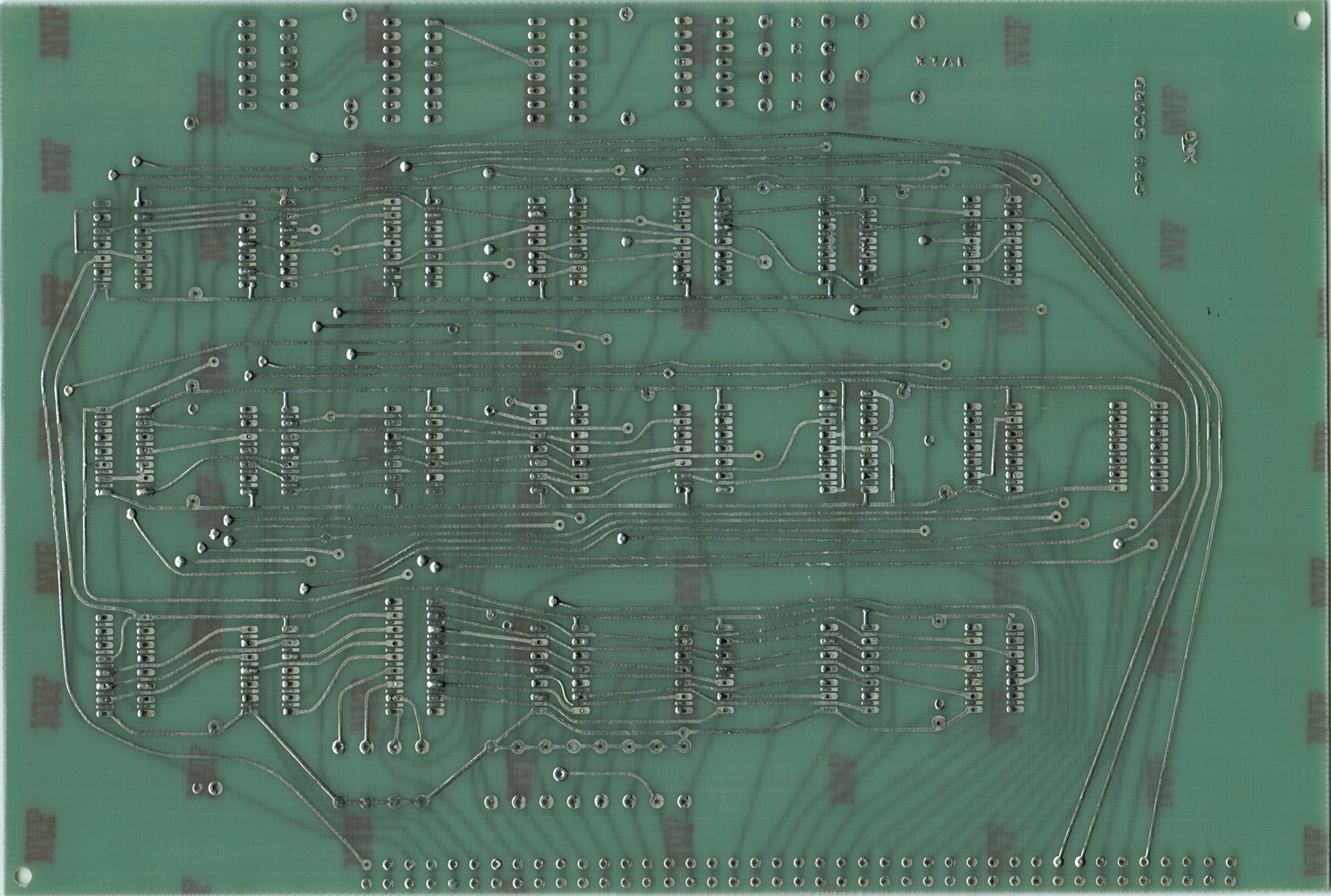For several months, not much progress has happened on the TVT. An attention-challenged collector, I’m always being tempted by other things. I ended up making a few more acquisitions in the last few months, including a second SWTPC 6800 system, a Netronics video terminal (and homebrew Z80 computer), a Jupiter Ace.. oh, and did I mention I scored some original Mark-8 boards? 🙂 I also got wind of another possible project – building a replica of the original SOL Terminal prototype. I actually discovered I had the proper keyboard to do it! But I digress.
Part of my problem with getting going on the TVT was knowing where to start. My logical brain said: go with the mainboard. But I didn’t have the transformers, nor some other odds and ends, and I kept delaying. Eventually I realized time was passing quickly, and maybe I could just build what I could and get going, and then fill in the blanks later?
So that’s what I decided to do! I decided I’d not care what order I went, I’d just make sure I was building the TVT every day I could, a bit at a time. Whatever I could do, I would do. That’s the only way to get there. Otherwise, procrastination leads to a dead project.
One detour before I built though, I decided I wasn’t quite satisfied with the colour of my boards. They just don’t look vintage enough in my eyes, up close. The old process of making PCB substrate (the fibreglass/plastic the copper traces are attached to) produced something that was somewhat fluorescent. That process was problematic and is no longer in use. Today’s boards tend to be either brown, or yellow, or a very light yellow green. I chose the latter since that was as close as I could get to the kind of vintage green you see on originals. Even now, I’m still not wild about it. I’ve had some crazy thoughts, like getting a piece of original substrate and having it replated with copper and then I could etch it. But, finding original substrate is almost impossible and the cost to do all that would be exorbitant. How about dyeing?
Yes, apparently you can dye PCBs. It’s simple. You get some Rit fabric dye, a pot your spouse won’t mind you destroying, and throw it in some hot water and boil your PCB until it attains the color you desire.
I decided, looking at my boards, they weren’t green enough. They were more on the yellow side, so, drawing on my experiences as an art student in the ancient past, thought I’d try using blue dye to green it more. Royal Blue, to be exact.
First, a comparison of colour. On the left, my new TVT mainboard. On the right, an original Mark-8 CPU board. You can see the difference right away — the bright fluorescent hue. This is likely impossible to reproduce with dye, but let’s see how close we can get.
The instructions say you mix up the dye separately in a cup or so of hot water, and then add to your hot pot. I guess this is to prevent clumping of the dye powder.
Next you need to build an apparatus to allow the board to be suspended in the pot. I don’t have any photos of my mainboard being dipped, but I do have photos of a Mark-8 reproduction board I was working on simultaneously:
I had the oven on high for about an hour. I didn’t notice any difference on inspection. I then left it simmering, for an hour, then two, then turned it off and left it overnight. I still wasn’t noticing a difference, so I decided to add more dye. Within an hour, there was a striking difference. Here’s two of my repro Mark-8 boards side by side just to give you an idea. One is undyed.
Quite a difference with the dye, huh? And here’s a comparison shot of the dyed Mark-8 board against that same board and an original SWTPC GT-6144 graphics board:
Unfortunately, not the correct color for the Mark-8 boards produced by Techniques, but could be legit as a totally home brew. And close to SWTPC, which provided the original TVT boards in the kit Radio Electronics offered.
I dyed my TVT boards with this stronger batch of dye. I ‘blue’ it!
Oops.
Definitely a little heavy on the blue. I can live with it, but a note for next time: keep the amount of dye relative to water light. My SWTPC boards went into the dye after I had doubled the blue, and so consequently the blue sunk in much more quickly. Further, the manufacturer of the boards I used for my TVT is a different one than my Mark-8. Subtle differences in the substrate result in different colors. That said, some of the boards I put in after the mainboard benefitted from that lesson, and actually came out pretty close to original colour. Check out the Timing board here vs. an original P197 SWTPC power supply board:
I mean, that’s kind of as close as I think you’re going to get with new substrate. Gotta be happy with that.
Lesson learned: more dye = less soaking time, less dye = more.
On to the build!


























